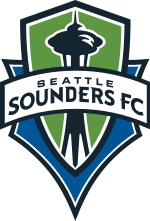Case Study: Seattle Seahawks and Seattle Sounders outlines how the teams use digital social tools to empower fans to have memorable experiences.
Kenton Olson, Seattle Seahawks & Seattle Sounders
 I had the opportunity to moderate the conference NFL session this afternoon at the Social Networking Conference, where pioneers from the Miami Dolphins and the Seattle Seahawks shared their experiences with social media. Here are my notes from Kenton Olson’s remarks. Bonus: he also mentioned some simple, high-impact tactics from his involvement with the Seattle Sounders.
I had the opportunity to moderate the conference NFL session this afternoon at the Social Networking Conference, where pioneers from the Miami Dolphins and the Seattle Seahawks shared their experiences with social media. Here are my notes from Kenton Olson’s remarks. Bonus: he also mentioned some simple, high-impact tactics from his involvement with the Seattle Sounders.
Background
 The Seattle Seahawks are proud of having the loudest fans in the NFL, and they want to translate that passion into offline behavior and connection. Here are Kenton’s insights on their impressive progress so far:
The Seattle Seahawks are proud of having the loudest fans in the NFL, and they want to translate that passion into offline behavior and connection. Here are Kenton’s insights on their impressive progress so far:
Seattle Seahawks Social Networking Lessons Learned
- In analyzing email marketing, they noticed that their opens were dropping consistently and, in focus groups with fans, they discovered that increasing smartphone use led to more deletes because people would see the subject lines and delete; they don’t want to read promotional emails on iPhone or Blackberry. Also, email opt-ins were dropping.
- Email increasingly used only for work.The NFL finally loosened the restrictions on using social networks (I didn’t get the date), so Kenton’s team started using Facebook and Twitter.
- They realized that, because they have high tech firms Amazon, Microsoft, Boeing (Starbucks) and Google (big office) in the area, their fans are comfortable with tech.
- One lesson learned was paying attention to users’ worksteams (he didn’t put it that way but that’s what he meant). His team started out by sending Facebook updates at 5-6 in the afternoon, which turned out to be the wrong time. People are overloaded then.
- The team discovered three uptapped periods for connecting on Facebook during the workday (much to the chagrin of 20th century employer thinking, I’m sure ,^): “Ramping up” is 8:00-10:00 when people want to catch up on what their friends did the night before, as they ease into the workday: “Rewards” is 2:30-3:30 in the afternoon, when people have blown through the post-lunch work and give themselves a break in the afternoon; “Clean up” is checking in before they leave for home and get involved with family activities.
- Goals for the social media activity were increasing promotions 40% and boosting clickthroughs from promo messages by 70%.
- You have to realize that Facebook offers many ways to opt out of messages and updates, so your communications have to deliver value. For example, they share injury reports. Also, timing is key (time of day) as well as a focus on engaging users (ask their opinions).
Seattle Sounders Social Networking
 The Seattle Sounders (Pro Soccer) are democratizing sports, according to Kenton. The fans have votes every four years about whether to replace the team’s management, for example.
The Seattle Sounders (Pro Soccer) are democratizing sports, according to Kenton. The fans have votes every four years about whether to replace the team’s management, for example.- The Sounders are breaking records for attendance in the stadium. They are close to being in the top 40 in attendance among teams worldwide (as a portion of the population).
- Here is a simple innovation they recently introduced: when fans sign up online for season tickets, the site asks them some simple questions about themselves (kids, favorite teams, etc.), so they suggest seats next to people with similar interests, which increases their overall experience at the stadium. They have a 100% renewal rate.
- One downside is, it’s harder to upgrade people because they want to stay with their friends!
Final Shots
These were very simple tactics that have had a major impact on the teams’ effectiveness. Web 2.0 does not have to be complex, so focus on getting simple wins to build your reputation within your company.

Leave a Reply
You must be logged in to post a comment.